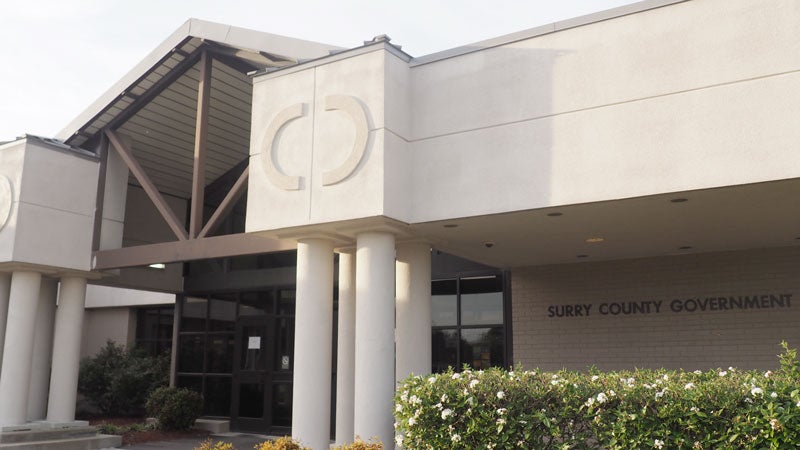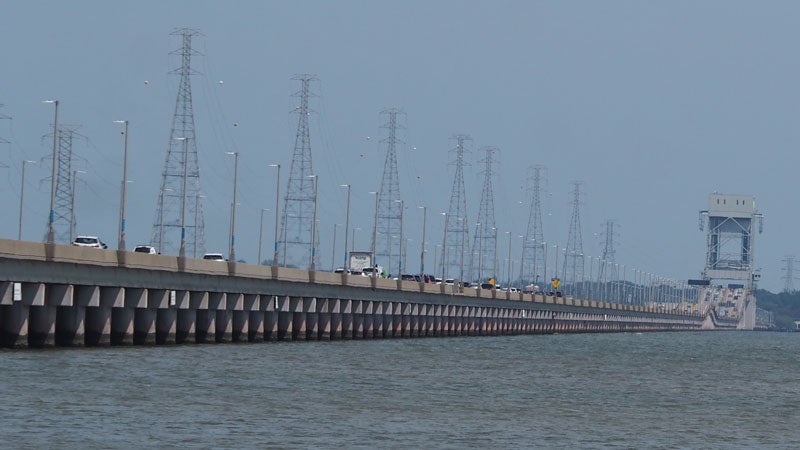Line may hold broadband key
Published 1:42 pm Wednesday, December 16, 2015
By Diana McFarland
News editorThe Mid-Atlantic Broadband Communities Corporation is currently installing fiber optic cable that might make high speed Internet possible to thousands of Isle of Wight County homes that do not now have it.
The question is how.
Surry County believes it has the answer, Isle of Wight County thus far does not.
Mid-Atlantic’s cable is providing the backbone for Surry’s fledgling broadband network, and county officials are in the process of issuing requests for proposals for service, said Surry County Administrator Tyrone Franklin.
Along with the cable, Surry is also installing a tower that will allow a large portion of the rural county to be served, Franklin said. {mprestriction ids=”1,2,3,4,5,6″}
Surry is providing the infrastructure, through stimulus money, grants and good timing, while business will provide the retail service, Franklin said.
Meanwhile, many in Isle of Wight have operated under the assumption that its contract with Charter Communications didn’t allow for other Internet providers to come to the county. However, that is not true, according to Isle of Wight County spokesman Don Robertson.
The 10-year contract, signed in 2012, deals specifically with cable television and not Internet service, Robertson said. Internet service is available from Charter, but is not specifically addressed in the contract.
Those who live in areas where Charter is not available rely on satellite, personal “hotspots” or even dial-up.
Charter offers a speed of 60 megabits on its website, but a recent state-sponsored speed study found speeds to vary significantly from that level, according to Jim and Connie Henderson who worked with the state to implement the survey.
Actual speeds with Charter averaged a few megabits per second for uploads and with somewhat faster uploads, with a few exceptions, of 10 to 20 mB’s, according to Jim Henderson.
(Download and upload speed can be slowed due to the computer in use, local network wiring or other factors.)
The same survey found that users of Verizon “wireless,” either by cell phone or by “hot spot” for a home computer, resulted in half of the tests speeds being 0.7 mBs or less, with a few to about 4 mBs as the fastest tested for both download and upload speeds, Henderson said.
The survey was on the Virginia Tech website and funded by the Virginia Office of Technology. The Hendersons, discouraged by the lack of resident participation and attention from county officials, abandoned their efforts until last month, when a civic group meeting revealed that developers and business owners were dismayed by the lack of high speed Internet in the county.
The issue caught the attention of Board of Supervisors Chairman Rex Alphin, who asked that staff make a presentation on Internet access at Thursday’s Board of Supervisors meeting.
At the same time, newly elected supervisors Dick Grice and William McCarty are looking to form a task force, and newly elected supervisor Joel Acree agrees it’s a topic for the Board to address.
“It’s something we need to look at as a Board. A task force is one way to do that,” he said.
Efforts to reach Hardy District Supervisor Rudolph Jefferson were unsuccessful.
Once Mid-Atlantic’s fiber optic network is complete, private internet service providers will be able to tap that cable to bring high speed internet to residences and businesses, according to Jeremy Satterfield, business development manager for Mid-Atlantic.
Speeds of up to 100 Gbps in waves of 10 Gbps are possible, Satterfield said. However, company officials were not able to say when the project would be finished. (A gigabite is 1,000 megabites.)
The challenge to accessing broadband via Mid-Atlantic’s trunkline is how it will be done, said Sandie Terry, vice president for broadband with the Virginia Center for Innovative Technology.
A feasible option for rural areas is a fixed wireless system, where a device attached to a tower transmits to an antenna attached to a house, Terry said, adding that’s the system she championed while in Franklin County. Surry County is also using that method of delivery, she said.
The trunk line then provides large swaths of bandwidth, she said.
However, many people are under the misconception that the federal or state government is going to do this, but it is localities that must initiate the process of putting in the infrastructure, Terry said.
This can be done through private public partnerships, by forming an authority and negotiations with providers to mitigate the costs, Terry said.
The Board of Supervisors needs to decide if this is a priority and then all must agree on how involved it wants to be, Terry said.
At that point the Center for Innovative Technology can come in and make suggestions, she said.
Terry said Franklin County began the process when it began upgrading its public safety radio system, which included installing towers. That was the time to couple those upgrades with introducing broadband, she said.
Currently, there is an $11 million upgrade for public safety radio system in the county’s capital improvement plan for the next fiscal year. Part of that plan would include new towers
Isle of Wight County Sheriff Mark Marshall said the new system may require new towers and coupling that effort with broadband has been discussed. {/mprestriction}





